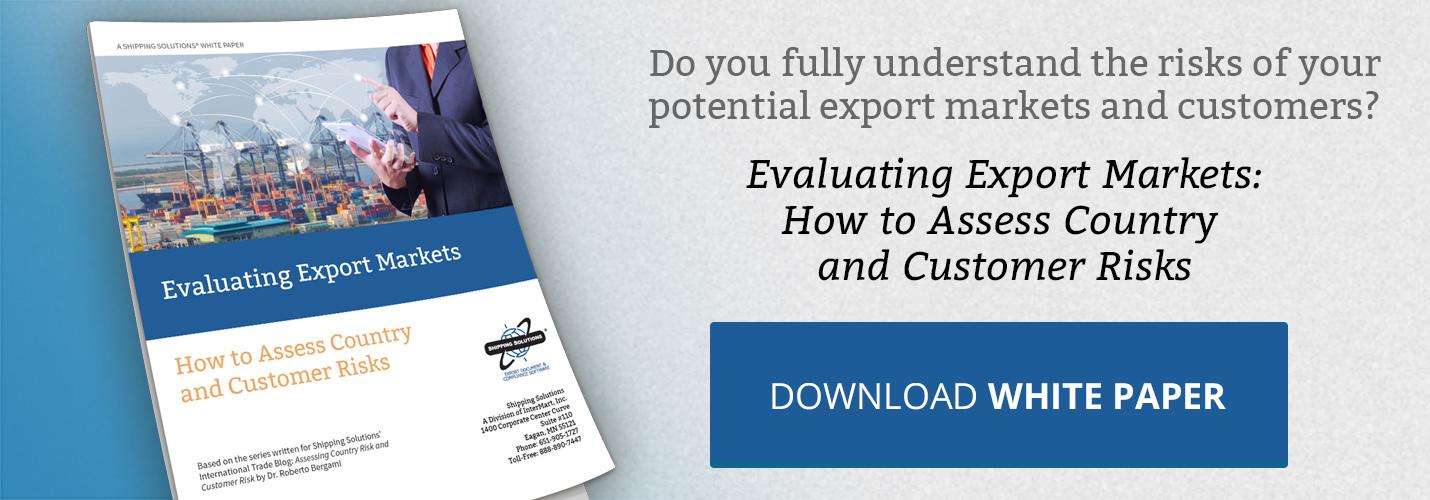The International Trade Blog International Sales & Marketing
Protecting Your Exports: Dealing with International Trademark Copycats
On: January 12, 2015 | By:  Becky DeStigter |
4 min. read
Becky DeStigter |
4 min. read
 I will never forget when I discovered that my company had a copycat. I assumed that my consulting firm was too small to attract attention and imitation. But there was my competitor in all my major markets with a confusingly similar online brand name and a mirror of my digital marketing program down to the blog topics and my twitter tips on international business. It was a creepy feeling, to say the least.
I will never forget when I discovered that my company had a copycat. I assumed that my consulting firm was too small to attract attention and imitation. But there was my competitor in all my major markets with a confusingly similar online brand name and a mirror of my digital marketing program down to the blog topics and my twitter tips on international business. It was a creepy feeling, to say the least.
Those who enter international markets frequently encounter copycat brands and marketing. Companies in China often report from customer service that consumers seek product support only to discover that their product is a counterfeit. In the U.S. and Canada, it is particularly frustrating when legally remedies in the home market are more straightforward.
What’s Your International Intellectual Property (IP) Protection Strategy?
Many Western companies assume that the primary way to handle copycat products and branding is the same as how we would deal with it back home. Actually, there are many alternative approaches. The important thing is to first ask:
- How important are your trademarks, copyrights and patents to your company’s success?
- How many potential markets are there outside of your home market?
- Will international copycat products and branding affect you in your home market?
- How much money do you have to fight infringement in overseas legal systems?
You can then base your approach on (1) the importance of your IP protection, (2) which countries hold the best market potential for your products and services, and (3) your budget for proactive and/or reactive measures.
There’s More Than One Way to Skin a Cat
Before we can discuss ways to fight back against copycats, it's important to understand what is included when we talk about intellectual property protection and the language that is used. If you are confused by the concept of IP, check out the blog post, 10 Terms Exporters Should Know about Intellectual Property.
Once you understand the language, you will better understand your options for protecting your intellectual property in foreign markets:
Legitimize Your Legal Claim to What’s Yours
Registering your trademarks and copyrights in the markets where you do business or even plan to do business in the future is an inexpensive and smart move. While enforcement is not the same in all countries, at least you can lay legal claim for what is yours. Check out, Five Strategies for Exporters to Protect Their Trademarks Globally.
Legal Action for All Infringement
This option is normally for larger companies with big legal budgets. I have only known one smaller company to take this route. Their CEO was a former IP infringement litigator and was very successful in the Chinese courts.
Fight by Proxy—Using Partners
In countries where the legal system is a weak option for foreigners, business relationships become more central. When the copy cat is harming your in-country partners in the process, having the partner fight the copy cat using local business practices can be very effective.
Fight by Proxy—Using Upset Customers
Imagine how you would feel if you bought a product thinking it was a reputable brand, only to find out that you had been tricked. Send the tricked consumers back to their point of sale to complain about the switch. Locals will also know their own culturally acceptable forms of recourse to right the wrong.
Innovation Motivation
If copycats are going to be able to reproduce your product in a certain amount of time, use that window to innovate to the next version. The copycat will always be one step behind and your product could lead the industry.
Recruit the Copycats to Work for You
This may sound a little crazy, and I have only heard of one company that tried it. An American software company had a subsidiary in China near Wuhan. They would write new software versions, but the copycats were always one step behind. The American manager figured out the location of the copycat business. He went down to the office and offered the two highly enterprising code writers jobs.
I hope this helps to give you some fresh perspectives on dealing with copycats. As for my own copycat, I called him on the phone and asked him to stop the infringement. He told me that he had no idea what I was talking about.
I was frustrated until months later when I happened to search the Internet for his name. My company link jumped to the top of his name search. If Google could figure out the game my copycat was playing, my market probably could too. The last I heard he had to quit the consulting industry and was working at Starbucks. Karma.
This article was first published in January 2015 and has been updated to include current information, links and formatting.

About the Author: Becky DeStigter
Becky DeStigter helps technology companies become more globally competitive. She aligns international business strategy with company goals, works to expand sales and operations internationally and often troubleshoots existing international operations and partnerships.
Ms. DeStigter is a serial entrepreneur, having worked six times in early-stage companies. She spent 4 years in the healthcare software industry in growth-stage companies. Ms. DeStigter founded a strategic marketing consulting company and operated it for six years. In recent years, she served twice as COO for Software-as-a-Service Industry born-global start-ups.



